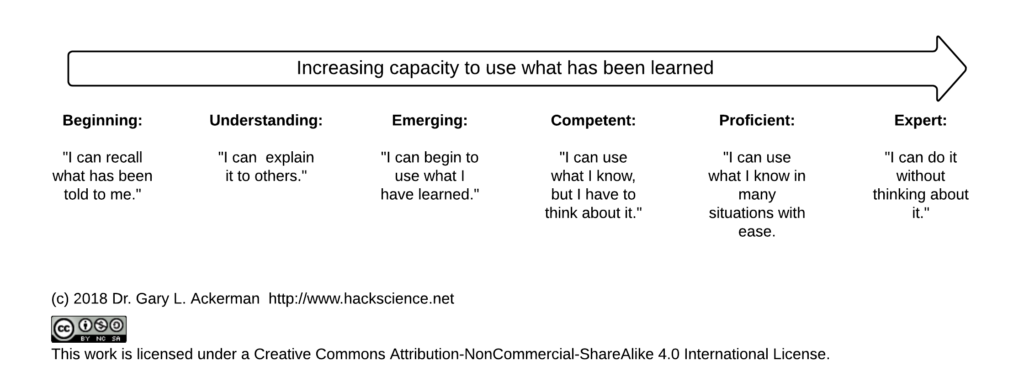Teachers know “proficiencies” are coming to dominate as the buzzword that is attracting the attention of educational leaders and policy makers. (Some might characterize this as a distraction of attention from important issues and needs, but I will proceed without comment on that speculation.) One of the disputes I have with how this is being implemented (and I have several– not necessarily on the concept, but with how it is being done) has to do with how we define “proficient.”
As I observe teachers and principals and curriculum leaders who are are converting their assessment and evaluation to “proficiency-based” methods, I see and hear them using the term “proficient,” but there seems to be little agreement about what it means to be proficiency, and there is little discussion about what it can mean. As I think about the question, “What does it mean to be proficient?” (thinking that is supported by my reading of the instructional design literature), the answer seems to be grounded in the real-world application of the curriculum and the degree of independence learners demonstrate. This leads to a continuum describing proficiency:

It does seem clear to my that we are hoping to capture students’ capacity to use what they have learned in different setting when we assess proficiency. Further, we are hoping to capture the ease with with they can use what they learned.
The transition to proficiency-based grading necessitates that we decrease the lessons we hope to assess and that w give students more opportunity to practice thinking and using the intellectual tools we give them. Continuing with a curriculum the comprises a laundry list of ideas and that is a sample of what experts know and that contains as many items as we have days in the school year is contrary to what we hope to do with this model of teaching.